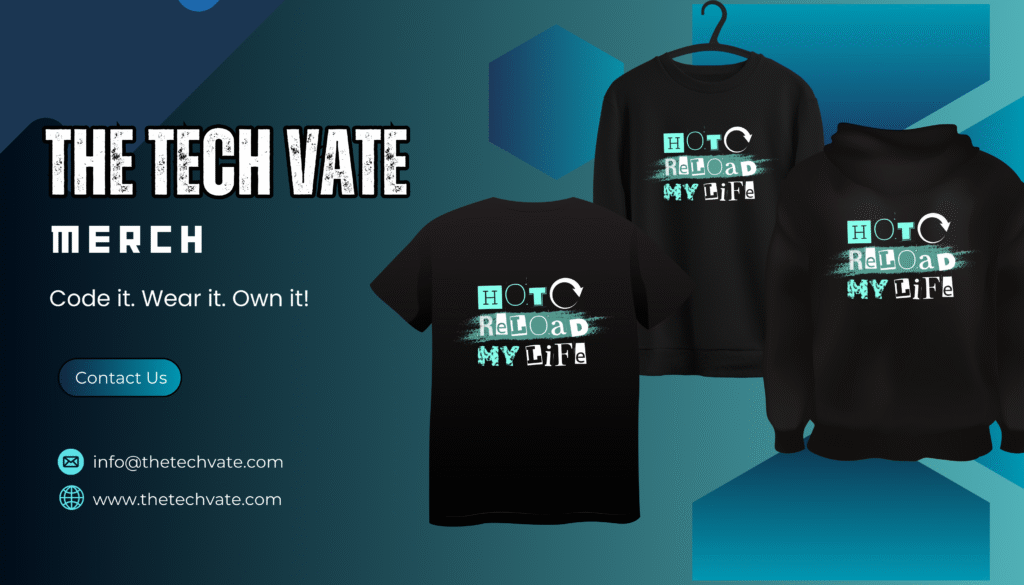Every great hero needs a sidekick. Batman had Robin. Iron Man had Jarvis. And Flutter – the darling of cross-platform app development – has Dart.
If Flutter is the sleek sports car that developers love to show off, Dart is the powerful engine under the hood quietly making everything run at lightning speed. Yet, when people talk about Flutter, Dart often gets left in the garage.
But here’s the truth – without Dart, Flutter wouldn’t be Flutter. Its famous hot reload, silky-smooth animations, and lightning-fast performance all trace back to one brilliant design decision: Google’s choice to build Flutter on Dart.
So in this article, we’re going under the hood to explore why Google chose Dart, how it fuels Flutter’s consistency and speed, and why this once-overlooked language became the secret sauce behind one of the most exciting frameworks in modern app development.
Grab your favorite beverage, put on your developer hat, and let’s talk about the unsung hero – Dart in Flutter.
1. The Flutter Glow-Up
If you’ve spent even five minutes in the app development world, you’ve heard about Flutter – Google’s magical UI toolkit that makes developers look like wizards.
It’s the framework that lets you build apps for Android, iOS, Web, Desktop, and even that one fridge that runs Linux – all from a single codebase.
But behind every great framework is an unsung hero – and in Flutter’s case, that hero is Dart.
Yes, Dart. The language that most developers ignored in 2011 because it wasn’t JavaScript, Python, or that mysterious thing called “Kotlin.”
Fast-forward to today, and Dart is the reason Flutter runs smoother than your morning coffee and faster than your boss’s email responses.
So grab a snack and let’s unpack how this once-overlooked language became the heartbeat of Flutter’s success.
2. Dart: The Language Everyone Forgot About (Until Now)
Picture this: It’s 2011. The tech world is obsessed with JavaScript frameworks. Every other week there’s a new “revolutionary” front-end library.
Then Google strolls in and says,
“Hey folks, here’s Dart – a language that’s fast, structured, and modern!”
And developers collectively went:
“Cool… but can it run in a browser?”
Spoiler: it could. But nobody cared because JavaScript had already thrown a house party and everyone was there.
So Dart quietly lived in the shadows, occasionally used in small projects, waiting for its moment to shine.
Then in 2017, Flutter arrived – and suddenly, Dart was the main character.
3. Why Google Chose Dart for Flutter
Let’s be honest: Google could have used almost any language for Flutter.
So why did they pick Dart – the programming equivalent of that smart kid nobody invited to lunch?
Turns out, Google had some pretty solid reasons.
Let’s break it down.
A. Speed: The Need for Real-Time Rendering
Flutter’s biggest bragging right is its speed – and Dart makes that possible.
Unlike many frameworks that rely on bridges to talk to native components (looking at you, React Native 
But to do that efficiently, it needed a language that could compile to native code and still allow for fast development cycles.
Dart does both:
Ahead-of-Time (AOT) compilation → makes apps fast and startup times instant.
Just-in-Time (JIT) compilation → powers Flutter’s legendary Hot Reload feature.
So when you tweak your app’s color from “boring blue” to “sunset orange” and see it instantly appear – that’s Dart flexing its muscles.
B. Developer Productivity: Hot Reload Magic
Ask any Flutter developer what they love most, and 9 out of 10 will say Hot Reload.
(The 10th one probably hasn’t saved their file yet.)
This isn’t just a feature – it’s a lifestyle.
Hot Reload means developers can experiment, fix bugs, and build UI components in real-time without restarting the app.
And it’s Dart’s JIT compilation that makes this sorcery possible.
Dart was designed to run fast and recompile small changes instantly, which is why Flutter feels less like traditional development and more like live sculpting your app.
C. Consistency Across Platforms
Most cross-platform frameworks act like translators. They take your code, whisper to the native OS in its own language, and hope nothing gets lost in translation.
But Flutter doesn’t translate – it paints its own UI.
That means your app looks and behaves the same on Android, iOS, web, and beyond.
Dart’s type-safe, object-oriented nature ensures that this consistency is maintained across every platform.
It’s like having one language that speaks perfectly to all devices – without needing an interpreter.
D. Easy Learning Curve
Let’s face it – developers don’t like surprises (unless it’s free pizza).
Dart feels familiar to anyone who’s touched Java, C#, or JavaScript.
That means less time scratching your head and more time building cool stuff.
You don’t have to wrestle with weird syntax or memorize obscure rules. Dart’s motto could honestly be:
“Simple enough to learn, powerful enough to brag about.”
E. The Power of Null Safety
Ah yes, the dreaded NullPointerException – the boss battle every developer faces.
Dart declared war on this bug with its sound null safety feature.
Now, you can’t accidentally assign null to a variable unless you explicitly say so.
This means fewer runtime crashes, cleaner code, and less crying at 2 AM.
4. How Dart Supercharges Flutter’s Performance
So, how exactly does Dart make Flutter so fast and smooth?
Let’s peek under the hood – but don’t worry, no scary compiler jargon here.
1. Ahead-of-Time (AOT) Compilation
When you build your Flutter app for release, Dart compiles it Ahead-of-Time into native machine code.
That means your app doesn’t need a middleman like a JavaScript bridge – it talks directly to the hardware.
Result:
Fast startup times
Smooth animations
Zero lag between user actions and app response
It’s like comparing a sports car to a bicycle. Dart just skips the traffic.
2. Just-in-Time (JIT) Compilation
During development, Dart switches to JIT mode, allowing Flutter to reload your changes instantly without losing the app’s state.
Change text color → Save → Boom, instant update.
It’s the reason developers can experiment like artists without waiting 10 minutes for a rebuild.
If JIT were a person, it’d be that friend who shows up instantly when you text “help.”
3. Garbage Collection and Memory Efficiency
Nobody likes memory leaks – except maybe horror movie directors.
Dart’s garbage collector works efficiently to free up unused memory, ensuring your Flutter app doesn’t hog your device’s RAM like a spoiled child.
That’s why even on budget phones, Flutter apps stay responsive and stable.
4. Tree Shaking
Sounds like something you’d do in a jungle, right?
In programming, tree shaking means removing unused code during compilation.
Dart automatically eliminates dead code, keeping your app lightweight and lean.
So your final build only includes what’s actually needed — no extra baggage, no slowdowns.
5. Dart’s Superpower: Consistent UI Rendering
Let’s be honest: consistency in UI is a big deal.
Have you ever used an app that looks fine on Android but suddenly turns into Picasso’s abstract art on iOS?
Flutter avoids that nightmare because Dart lets it control every pixel on the screen.
Instead of relying on OEM widgets (which vary across platforms), Flutter uses Dart to build its own rendering engine, ensuring pixel-perfect design.
So when your designer says, “Can we make that button look exactly like this mockup?”
You can confidently reply, “Yes. On every device. Even your grandma’s old iPhone.”
6. Dart’s Secret Sauce: The Tooling Ecosystem
Dart doesn’t just bring performance – it brings the tools to make your life easier.
pub.dev – Flutter’s treasure chest of open-source packages.
dartfmt – Keeps your code looking neat (because messy code is a crime).
Dart Analyzer – Catches potential issues before they ruin your day.
Dart DevTools – Lets you debug, profile, and optimize your Flutter app like a pro.
In short, Dart isn’t just a language – it’s a complete developer experience.
7. Real-World Impact: Companies Betting on Dart
When you look at who’s using Flutter and Dart, you’ll see some familiar faces:
Google Ads → Built with Flutter.
eBay Motors → Uses Flutter and Dart for cross-platform app development.
Reflectly → That feel-good journaling app with smooth animations? Yep, Dart.
BMW, Toyota, Tencent, and Philips Hue are all in on the Flutter+Dart combo.
These companies aren’t experimenting – they’re shipping production apps.
That’s how reliable Dart has become: the quiet language running billions of dollars worth of software.
8. Dart’s Evolution: From Underdog to Rockstar
Dart’s story is one of redemption.
It started as “that other Google language,” but with Flutter’s rise, it became a central player in modern app development.
Over time, Dart has added features like:
Sound null safety
Extension methods
Isolates for concurrency
Faster compiler pipelines
The language has matured beautifully — like a fine wine that finally found its audience.
And now, with Dart 3, it’s even more powerful, supporting records, patterns, and enhanced type safety — making it a true modern powerhouse.
9. Flutter Without Dart? A Tragic Alternate Universe
Imagine Flutter without Dart.
You’d probably end up with:
No hot reload.
Slower builds.
Laggy UI.
Developers crying into their keyboards.
Dart isn’t just Flutter’s language – it’s Flutter’s DNA.
The two are so intertwined that separating them would be like removing the cheese from pizza.
Sure, it’s technically possible… but why would you?
10. Dart’s Friendly Syntax: A Breath of Fresh Air
Let’s talk about how human-readable Dart is.
Here’s a quick example:
void main() {
var name = 'Flutter';
print('Hello, $name!');
}
Clean, simple, no weird semicolon drama.
If you’ve coded in JavaScript or Java, you’ll feel right at home.
If you haven’t, you’ll still pick it up in a weekend (or a long coffee session).
Dart was designed for developer happiness, and you feel it the moment you start typing.
11. The Flutter-Dart Synergy: A Match Made in Google Heaven
Flutter and Dart are like Iron Man and his suit — amazing separately, unstoppable together.
Dart gives Flutter speed, flexibility, and structure.
Flutter gives Dart purpose, community, and fame.
This symbiosis is what allows developers to build apps that are beautiful, fast, and consistent – all without sacrificing sanity.
It’s rare in tech that a framework and language feel built for each other, but Flutter and Dart truly are.
12. The Future of Dart in Flutter
Dart isn’t slowing down – it’s gearing up.
With Google’s continued investment and the open-source community’s growth, we’re seeing exciting developments:
Better WebAssembly support (making Flutter Web faster).
Improved tooling and async performance.
More language ergonomics for easier scaling.
In other words, Dart is becoming not just a Flutter language, but a multi-platform powerhouse in its own right.
13. Why Beginners Should Care About Dart
If you’re just starting out with Flutter, it’s tempting to skip learning Dart deeply.
But don’t. Dart is the key that unlocks Flutter’s real magic.
Once you understand Dart’s quirks — streams, isolates, async functions — you’ll find yourself building apps faster, cleaner, and with fewer “why isn’t this working?” moments.
Think of Dart as your trusty sidekick. The better you know it, the smoother your Flutter journey becomes.
14. Final Thoughts: Dart Deserves the Spotlight
For years, Dart lived in the shadows. Now, it’s the backbone of one of the world’s most beloved frameworks.
It’s fast, clean, and modern – everything a developer dreams of.
Flutter may be the star of the show, dazzling audiences with its beautiful UIs and smooth animations.
But behind that curtain, Dart is the tireless artist making it all possible.
So next time you hit Hot Reload and watch your app instantly come to life, remember:
That’s not just Flutter working its magic — that’s Dart whispering,
“I got you.”













